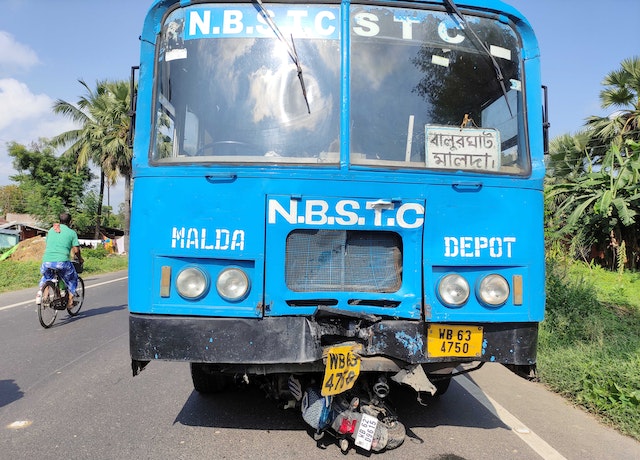Introduction
As of 2019, 19 US states, the District of Columbia, and Puerto Rico have laws requiring motorcyclists to wear DOT-approved helmets while riding. These laws have been proven to be effective in increasing helmet use and reducing head injuries and fatalities in motorcycle accidents. Despite the obvious safety benefits, many motorcycle enthusiasts still do not wear or refuse to wear a helmet.
Importance of Motorcycle Helmets for Safety
Motorcycle helmets are proven to be one of the most effective protective gears for riders. They provide a vital barrier between the rider’s head and the hard surfaces of the road, vehicles, or objects in case of an accident. According to research, helmets can reduce the risk of head injuries by up to 69% and the risk of death by up to 42%. They not only protect the skull but also help absorb the impact of a crash, reducing the severity of brain injuries.
Overview of Motorcycle Helmet Laws in the United States
Motorcycle helmet laws in the United States are primarily enforced at the state level, resulting in a patchwork of regulations across the country. While some states have comprehensive helmet laws that require all riders to wear helmets, others have partial helmet laws that only mandate specific riders or conditions to wear them. Additionally, a few states have chosen not to implement any helmet laws at all.
The variation in motorcycle helmet laws is largely influenced by a combination of factors, including historical context, public opinion, motorcycle accident data, and individual states’ approaches to balancing personal freedom with public safety.
Why Helmet Laws Vary from State to State
The reasons behind the variations in motorcycle helmet laws from state to state are multifaceted. Several factors come into play when determining the stance on helmet regulations. These factors include:
Public Safety Concerns
States with strict universal helmet laws prioritize public safety and view motorcycle helmets as a critical component in reducing injuries and fatalities. These laws aim to protect all riders, regardless of age or experience level, by mandating the use of helmets.
Individual Freedom and Personal Choice
On the other hand, states that have chosen to implement partial or no helmet laws often argue that individuals should have the freedom to decide whether or not to wear a helmet. They believe that riders should have the autonomy to make choices about their own safety, even if it comes with potential risks.
Economic Considerations
Economic factors can also influence the decision-making process regarding helmet laws. Some states may consider the potential impact on tourism and motorcycle-related industries when deciding whether to implement or modify helmet regulations.
Public Opinion and Political Climate
Public opinion and the prevailing political climate in each state can heavily influence the stance on helmet laws. The views of citizens, advocacy groups, and lawmakers play a significant role in shaping the legislation or lack thereof.
In the following sections, we will explore the different types of helmet laws in more detail, analyzing their requirements, exemptions, penalties, and the impact they have on rider safety. By understanding the intricacies of motorcycle helmet laws state by state, we can gain valuable insights into the effectiveness and implications of these regulations.
Understanding the Different Types of Helmet Laws
To fully comprehend the landscape of motorcycle helmet laws, it is essential to first understand the different types of laws that exist. The United States has three main categories of helmet laws: universal helmet laws, partial helmet laws, and no helmet laws.
Universal Helmet Laws require all motorcycle riders, regardless of age or experience, to wear helmets. These laws are implemented in several states as a means of ensuring maximum safety for riders.
Partial Helmet Laws are less restrictive, typically requiring only certain segments of the riding population to wear helmets. These laws may apply to specific age groups, riding conditions, or licensing requirements.
No Helmet Laws are implemented in a handful of states, allowing riders the freedom to choose whether or not to wear a helmet. These states often have specific requirements, such as minimum age or insurance coverage, for riders who opt not to wear helmets.
State-by-State Analysis of Motorcycle Helmet Laws
The United States consists of a diverse array of states, each with its own unique approach to motorcycle helmet laws. In this blog post, we will examine the helmet laws in selected states from each category, providing a comprehensive analysis of their requirements, exceptions, penalties, and the impact of these laws on rider safety.
States with Universal Helmet Laws
California
California, known for its progressive stance on safety regulations, enforces a universal helmet law. We will explore the requirements and exceptions under this law and delve into the statistics and impact of helmet laws on motorcycle safety in the Golden State.
Florida
Florida also upholds a universal helmet law, but with some differences in its application. We will examine the specific helmet requirements, exceptions, and penalties in place, as well as evaluate the effectiveness of these laws in Florida.
States with Partial Helmet Laws
Texas
Texas is one of the states that has implemented partial helmet laws. We will discuss the intricacies of these laws, including the specific requirements, exceptions, and penalties, while also examining the impact of helmet laws on rider safety in the Lone Star State.
Pennsylvania
Pennsylvania is another state with partial helmet laws, and we will explore the nuances of these regulations. By analyzing the helmet requirements, exceptions, and penalties, we can gain insights into the effectiveness of helmet laws in preserving rider safety in the Keystone State.
States with No Helmet Laws
Iowa
Iowa stands out as a state without any helmet laws. We will delve into the reasons behind Iowa’s decision, considering the arguments and perspectives surrounding the absence of helmet laws. Additionally, we will examine motorcycle accident data and safety concerns in Iowa, comparing them to neighboring states with helmet laws.
New Hampshire
New Hampshire is also known for its lack of helmet laws. We will explore the historical context and reasons behind this stance, while evaluating the impact of helmet laws on motorcycle safety in the state. Furthermore, we will delve into the ongoing debates and public opinion surrounding helmet laws in New Hampshire.
State-by-State Analysis of Motorcycle Helmet Laws
Now that we have a general understanding of the different types of helmet laws, let’s dive into a detailed analysis of specific states and their respective regulations. In this section, we will explore the helmet laws in states that have implemented universal helmet laws, partial helmet laws, and states without helmet laws.
States with Universal Helmet Laws
California
California is one of the states that has implemented a universal helmet law. This means that all motorcycle riders, regardless of age or experience, are required to wear helmets while riding. California’s universal helmet law aims to ensure maximum safety for riders by mandating helmet use.
Under California’s helmet law, riders must wear helmets that meet the standards set by the Department of Transportation (DOT). These helmets are designed to provide optimal protection in the event of a crash. Exceptions to the helmet requirement are minimal and include riders on three-wheeled motorcycles with enclosed cabins or riders participating in parades authorized by local jurisdictions.
The implementation of California’s universal helmet law has had a positive impact on rider safety. Studies have shown a significant reduction in head injuries and fatalities since the law was enacted. The statistics speak for themselves, highlighting the effectiveness of universal helmet laws in protecting riders on California’s roads.
Florida
Florida is another state that upholds a universal helmet law, although with some differences compared to California. In Florida, all motorcycle riders are required to wear helmets, but there are exceptions based on age and insurance coverage.
Riders who are 21 years of age or older and carry at least $10,000 in medical insurance coverage are exempt from wearing helmets in Florida. However, these riders must have completed a motorcycle safety course or carry at least $10,000 in medical insurance coverage.
The implementation of Florida’s universal helmet law has sparked debates and discussions about the effectiveness of partial exemptions. While proponents argue that the law promotes personal freedom and choice, critics express concerns about the potential risks and higher rates of head injuries among those not wearing helmets.
States with Partial Helmet Laws
Texas
Texas is one of the states that have implemented partial helmet laws. In Texas, motorcycle riders who are 21 years of age or older and have completed a motorcycle safety course or have health insurance coverage are not required to wear helmets. However, riders under the age of 21 must wear helmets at all times.
The implementation of partial helmet laws in Texas has generated mixed opinions. Proponents argue that the law strikes a balance between personal freedom and safety concerns, allowing experienced riders to make their own choices. However, critics express concerns about the potential impact on rider safety and the increased risk of head injuries among those not wearing helmets.
Pennsylvania
Pennsylvania also has partial helmet laws in place. Riders who are 21 years of age or older and have either two years of riding experience or have completed a motorcycle safety course are exempt from wearing helmets. However, riders who do not meet these requirements must wear helmets.
The implementation of partial helmet laws in Pennsylvania has been met with both support and criticism. Supporters argue that the law promotes personal freedom while still prioritizing safety for less experienced riders. However, critics express concerns about the potential increase in head injuries and fatalities among those not wearing helmets.
States with No Helmet Laws
Iowa
Iowa is one of the states without any helmet laws, allowing riders to choose whether or not to wear helmets. In Iowa, riders over the age of 18 are not required to wear helmets, regardless of their riding experience or insurance coverage.
The absence of helmet laws in Iowa has sparked debates and discussions about the balance between personal freedom and public safety. Advocates argue that riders should have the autonomy to make their own choices about helmet use. However, critics express concerns about the potential increase in head injuries and fatalities among riders who choose not to wear helmets.
New Hampshire
New Hampshire is another state without any helmet laws. In New Hampshire, riders over the age of 18 are not required to wear helmets. The state has a long-standing tradition of minimal government intervention, and the absence of helmet laws aligns with the state’s philosophy on personal freedom and individual choice.
The decision to not implement helmet laws in New Hampshire has sparked ongoing debates and discussions. Supporters of the absence of helmet laws argue that adults should have the freedom to make their own choices about helmet use. However, opponents express concerns about the potential risks and higher rates of head injuries among riders who choose not to wear helmets.

Current Debates and Controversies Surrounding Motorcycle Helmet Laws
The topic of motorcycle helmet laws is not without its fair share of debates and controversies. The implementation and enforcement of helmet laws have been a subject of ongoing discussions among policymakers, riders, safety advocates, and civil liberty proponents. In this section, we will explore some of the key arguments for and against mandatory helmet laws, as well as the various factors that contribute to the ongoing debates.
Arguments for Mandatory Helmet Laws
1. Safety and Injury Prevention: Proponents of mandatory helmet laws argue that they are crucial for ensuring the safety of motorcycle riders. Helmets provide a vital protective barrier that can significantly reduce the risk of head injuries and fatalities in the event of an accident. By mandating helmet use, these laws help mitigate the potential impact of motorcycle crashes and contribute to overall road safety.
2. Public Health and Economic Burden: Mandatory helmet laws also have public health implications. Motorcycle accidents often result in severe injuries that require extensive medical care, which can burden the healthcare system and increase healthcare costs. Helmets not only protect riders but also reduce the financial burden on society by preventing potentially catastrophic injuries.
3. Deterrence Effect: Mandatory helmet laws act as a deterrent, encouraging riders to wear helmets and adopt safer riding practices. When riders know that helmet use is required by law, they are more likely to comply and prioritize their safety. This can lead to a positive cultural shift towards safer riding habits and ultimately reduce the number of accidents and injuries.
Arguments against Mandatory Helmet Laws
1. Individual Freedom and Personal Choice: One of the primary arguments against mandatory helmet laws is rooted in the belief that individuals should have the freedom to make their own choices regarding their safety. Opponents argue that helmet use should be a matter of personal responsibility and that individuals should have the autonomy to assess the risks and make informed decisions about wearing helmets.
2. Rider Comfort and Visibility: Some riders argue that helmets can restrict their field of vision, reduce hearing capabilities, or cause discomfort during long rides. They believe that helmet use should be optional, allowing riders to prioritize their comfort and adapt to various riding conditions. They argue that riders who are comfortable and have unobstructed visibility are more likely to ride safely.
3. Effectiveness and Enforcement: Critics of mandatory helmet laws question the effectiveness of helmets in preventing injuries and fatalities. They argue that the impact of helmet use on rider safety may be overstated and that other factors, such as rider training, road infrastructure, and driver education, should be given equal or greater attention. Additionally, the enforcement of helmet laws can be challenging, and some argue that limited resources might be better allocated to other road safety initiatives.
Influence of Motorcycle Helmet Laws on Ridership Rates
Another aspect of the helmet law debate revolves around its potential impact on ridership rates. Some argue that strict helmet laws may deter individuals from riding motorcycles altogether, leading to a decline in motorcycle-related tourism and economic activity. Conversely, others believe that helmet laws have minimal impact on ridership and that the benefits of increased safety outweigh any potential economic losses.
Studies examining the relationship between helmet laws and ridership rates have yielded mixed results. While some research suggests a negative correlation between helmet laws and ridership, other studies have found no significant impact. Factors such as cultural attitudes towards motorcycles, infrastructure, and weather conditions may also influence ridership rates.
Economic Considerations and Insurance Implications
Helmet laws can also have economic implications, particularly in terms of healthcare costs and insurance coverage. Motorcycle accidents resulting in severe head injuries can lead to substantial medical expenses, which are often borne by the healthcare system or insurance companies. Mandatory helmet laws can help mitigate these costs by reducing the number and severity of head injuries, potentially leading to lower insurance premiums and healthcare expenditures.
However, the absence of helmet laws or the presence of partial helmet laws can result in higher medical costs and insurance rates, as riders without helmets are more likely to sustain severe injuries. The economic impact of helmet laws is a complex issue that requires careful consideration of various factors, including healthcare systems, insurance markets, and the overall cost-benefit analysis.
Effectiveness of Helmet Laws in Reducing Motorcycle Fatalities and Injuries
The effectiveness of helmet laws in reducing motorcycle fatalities and injuries is a critical point of contention in the helmet law debate. Proponents argue that helmet use is a proven and effective strategy for preventing head injuries and saving lives. They cite research and studies that demonstrate the significant reduction in fatalities and the severity of injuries among riders who wear helmets.
Critics, on the other hand, question the effectiveness of helmets in preventing injuries, especially in certain types of accidents. They argue that helmets may not provide adequate protection in high-impact crashes or those involving multiple vehicles. Additionally, they argue that helmet laws may create a false sense of security, leading to riskier riding behaviors or a lack of focus on other important safety measures.
Impact of Helmet Laws on Personal Freedom and Individual Choice
The helmet law debate also delves into broader discussions about personal freedom and individual choice. Supporters of mandatory helmet laws argue that the primary responsibility of the government is to protect the well-being of its citizens, even if it means imposing restrictions on personal freedoms. They contend that the potential benefits of helmet laws in terms of injury prevention and public health outweigh any perceived infringement on individual liberties.
Opponents of mandatory helmet laws argue that individuals should have the autonomy to assess risks and make their own choices regarding their safety. They believe that individuals are best positioned to make decisions about their personal well-being, and the government should not interfere with their freedom to ride without a helmet if they so choose.

Promoting Motorcycle Safety and Awareness
When it comes to motorcycle safety, helmet laws are just one piece of the puzzle. To truly promote motorcycle safety and awareness, a comprehensive approach is necessary. In this section, we will explore several key initiatives and practices that can contribute to a safer riding environment for motorcycle enthusiasts.
Rider Education and Training
One of the most effective ways to enhance motorcycle safety is through comprehensive rider education and training programs. These programs provide riders with the necessary knowledge and skills to navigate the roads safely. They cover essential topics such as defensive riding techniques, hazard awareness, proper braking and cornering techniques, and the importance of wearing protective gear, including helmets.
Rider education and training programs often include both classroom instruction and hands-on riding experience. They are typically offered by certified instructors or organizations and may lead to the issuance of a motorcycle license or endorsement. By investing in rider education and training, riders can acquire the skills and knowledge needed to navigate various road conditions and handle unexpected situations, ultimately reducing the likelihood of accidents.
Improved Road Infrastructure
Another crucial aspect of motorcycle safety is the improvement of road infrastructure. Motorcycle riders are more vulnerable than those in enclosed vehicles, and road conditions can significantly impact their safety. By enhancing road design and infrastructure, we can create a safer environment for all road users, including motorcyclists.
Some key considerations for motorcycle-friendly road infrastructure include:
- Smoother road surfaces to minimize the risk of skidding and loss of control.
- Clear and visible road signs and markings to aid navigation.
- Well-maintained pavement with minimal potholes and debris.
- Adequate lighting to enhance visibility, especially during nighttime riding.
- Properly designed intersections and traffic calming measures to reduce the risk of collisions.
By prioritizing motorcycle safety in road infrastructure planning and maintenance, we can help create a safer and more accommodating environment for riders.
Driver Awareness and Education
In addition to rider education, it is equally important to promote driver awareness and education. Many motorcycle accidents occur due to the lack of visibility and awareness on the part of other drivers. By educating drivers about the unique challenges faced by motorcyclists and promoting a culture of mutual respect on the road, we can reduce the risk of accidents caused by driver negligence.
Driver education programs should emphasize the importance of looking out for motorcycles, maintaining a safe distance, signaling intentions, and being aware of blind spots. These programs can be integrated into driver’s education courses, license renewal processes, and public awareness campaigns.
Furthermore, public awareness campaigns targeting both drivers and riders can help foster a culture of safety and mutual respect on the road. These campaigns can highlight the importance of sharing the road, looking twice for motorcycles, and understanding the vulnerabilities faced by motorcyclists.
Encouraging Protective Gear
While helmet laws focus primarily on helmets, it is essential to highlight the importance of other protective gear as well. Encouraging riders to wear appropriate protective gear, such as gloves, jackets, pants, boots, and reflective clothing, can significantly enhance their safety on the road.
These gear items provide additional protection against abrasions, burns, and impact injuries. They also help improve visibility, especially in low-light conditions. By promoting the use of comprehensive protective gear, we can reduce the severity of injuries in the event of an accident.
Motorcycle Safety Inspections
Regular motorcycle safety inspections can contribute to rider safety by ensuring that motorcycles are in good working condition. These inspections typically cover essential components such as brakes, tires, lights, signals, and mirrors. By identifying and addressing any potential mechanical issues, these inspections help reduce the risk of accidents caused by equipment failure.
Some states require periodic safety inspections for motorcycles, while others encourage riders to conduct self-inspections or seek professional inspections voluntarily. These inspections, combined with regular maintenance and servicing, can go a long way in preventing accidents caused by mechanical failures.
Continued Research and Development
Advancements in motorcycle technology and safety gear are continuously evolving. Continued research and development in this field are crucial for improving motorcycle safety. Manufacturers are constantly working on innovations such as advanced braking systems, stability control, improved helmet designs, and impact-absorbing materials.
Government agencies, research institutions, and advocacy groups also play a vital role in conducting research and promoting safety initiatives. By staying informed about the latest research and developments, riders can make informed choices when it comes to purchasing safety gear and selecting motorcycles with advanced safety features.
Conclusion
Promoting motorcycle safety and awareness requires a holistic approach that encompasses rider education, improved road infrastructure, driver awareness, protective gear, safety inspections, and ongoing research and development. By addressing these various aspects, we can create a safer riding environment for motorcyclists and reduce the risk of accidents and injuries.
While helmet laws are an important component of motorcycle safety, they should be considered alongside other initiatives to ensure comprehensive protection for riders. By working together as riders, policymakers, safety advocates, and the wider community, we can foster a culture of safety, awareness, and responsible riding practices. Through collective efforts, we can make significant strides in promoting motorcycle safety and creating a safer future for all riders.
Remember, every rider has a role to play in their own safety and the safety of others on the road. Stay informed, practice responsible riding habits, and enjoy the thrill of motorcycle riding while prioritizing safety.
More reading on the subject:










